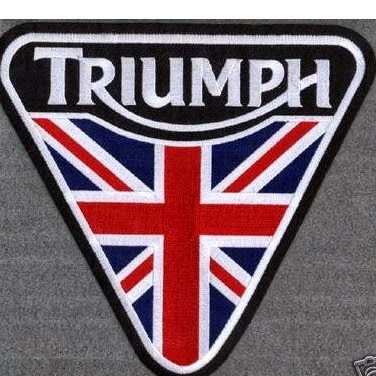William Randall Mcdonnell
age ~73
from Saint Louis, MO
- Also known as:
-
- William R Mcdonnell
- William Randala Mcdonnell
- William R Mcdonnel
- William R Mcbonnell
- William Mcdonald
- Phone and address:
-
1165 Bella Vista Dr, Saint Louis, MO 63131
314 994-1210
William Mcdonnell Phones & Addresses
- 1165 Bella Vista Dr, Saint Louis, MO 63131 • 314 994-1210
- Frontenac, MO
- Las Vegas, NV
- 960 Jeanerette Dr, Saint Louis, MO 63130
Ranks
-
Licence:Virginia - Authorized to practice law
-
Date:1988
Name / Title
Company / Classification
Phones & Addresses
President
Advanced Aerospace Tech
Aircraft
Aircraft
54 Roan Ln, Saint Louis, MO 63124
314 994-0244
314 994-0244
CHRYSALIS HAIR SALON "LLC"
B & S RENTALS, LIMITED
X-TREME RENTAL PURCHASE, LLC
WILLIAM AND SHERI MCDONNELL FAMILY LLC
Principal
McDonnell Carpet Service
Ret Floor Covering
Ret Floor Covering
108 Briarcliff Dr, Saint Charles, MO 63301
President
Advanced Aerospace Technologies
Aircraft Design
Aircraft Design
54 Roan Ln, Saint Louis, MO 63124
314 994-0244
314 994-0244
M
Mbm Global Enterprises, LLC
3027 E Sunset Rd, Las Vegas, NV 89120
License Records
William A. Mcdonnell
License #:
0699
Category:
Licensed Masters Level Psychologist
William Michael Mcdonnell Md
License #:
27939 - Active
Category:
Medicine
Issued Date:
Jun 4, 2014
Effective Date:
Jun 4, 2014
Expiration Date:
Oct 1, 2018
Type:
Physician
William R Mcdonnell
License #:
RS125660A - Expired
Category:
Real Estate Commission
Type:
Real Estate Salesperson-Standard
Us Patents
-
Helicopter Airborne Load Systems And Composite Aircraft Configurations
view source -
US Patent:42679877, May 19, 1981
-
Filed:Mar 29, 1979
-
Appl. No.:6/024881
-
Inventors:William R. McDonnell - Ladue MO
-
International Classification:B64D 500
-
US Classification:244 2
-
Abstract:This invention pertains to helicopter airborne load systems and composite aircraft configurations. The composite aircraft configurations are designed to allow a fixed wing aircraft to take off and land either vertically or in a short ground run when assisted by a rotary winged aircraft such as a helicopter, and includes a maneuverable probe system used to attach two aircraft to form a composite aircraft configuration, the fixed wing aircraft embodying the use of a receptacle or attachment device cooperative with the maneuverable probe to effect the uniting of the aircraft. The helicopter systems airborne includes the use of the probe to cooperate with special external pods capable of carrying loads, fuel and instrumented devices.
-
Asymmetric Aircraft And Their Launch And Recovery Systems From Small Ships
view source -
US Patent:20210147081, May 20, 2021
-
Filed:Jan 6, 2021
-
Appl. No.:17/142921
-
Inventors:- Las Vegas NV, US
William Randall McDonnell - Las Vegas NV, US -
International Classification:B64C 39/00
B64F 1/02
B64F 1/22
B64F 1/04
B64C 39/02
B63H 9/069
B64C 3/10 -
Abstract:An asymmetric aircraft and an aircraft that can operate from small ships and be stored in high density with three aircraft or more in one helicopter hangar without needing a landing gear or wing fold. These aircraft slide into and out of the hangar on dollies like circuit boards in a computer and are launched and recovered using a large towed parafoil.
-
Oblique Blended Wing Body Aircraft
view source -
US Patent:20190382098, Dec 19, 2019
-
Filed:Aug 30, 2019
-
Appl. No.:16/557152
-
Inventors:- St. Louis MO, US
William Randall McDonnell - Las Vegas NV, US -
International Classification:B64C 3/10
B64C 30/00
B64C 39/10 -
Abstract:An oblique wing aircraft designed for reduced surface area to volume ratio. The aircraft has an oblique wing comprising a forward swept wing segment and an aft swept wing segment. A center oblique airfoil section connects the forward and aft swept wing segments. The center oblique airfoil section has a larger chord near its centerline than the chords of either of the forward or aft swept wing segments. The chord of the center oblique airfoil section tapers down more rapidly than the forward or aft wing segments as the center oblique airfoil section extends outboard toward the forward and aft swept wings. Preferably, the aircraft is an all-wing aircraft.
Resumes

William Bill Mcdonnell
view source
William Mcdonnell
view source
William Mcdonnell
view source
William Mcdonnell
view source
William Mcdonnell
view sourceLocation:
United States
Lawyers & Attorneys

William Michael McDonnell - Lawyer
view sourceLicenses:
Virginia - Authorized to practice law 1988
Youtube
Googleplus

William Mcdonnell

William Mcdonnell

William Mcdonnell

William Mcdonnell

William Mcdonnell

William Mcdonnell

William Mcdonnell (Tyson2...

William Mcdonnell
Get Report for William Randall Mcdonnell from Saint Louis, MO, age ~73





